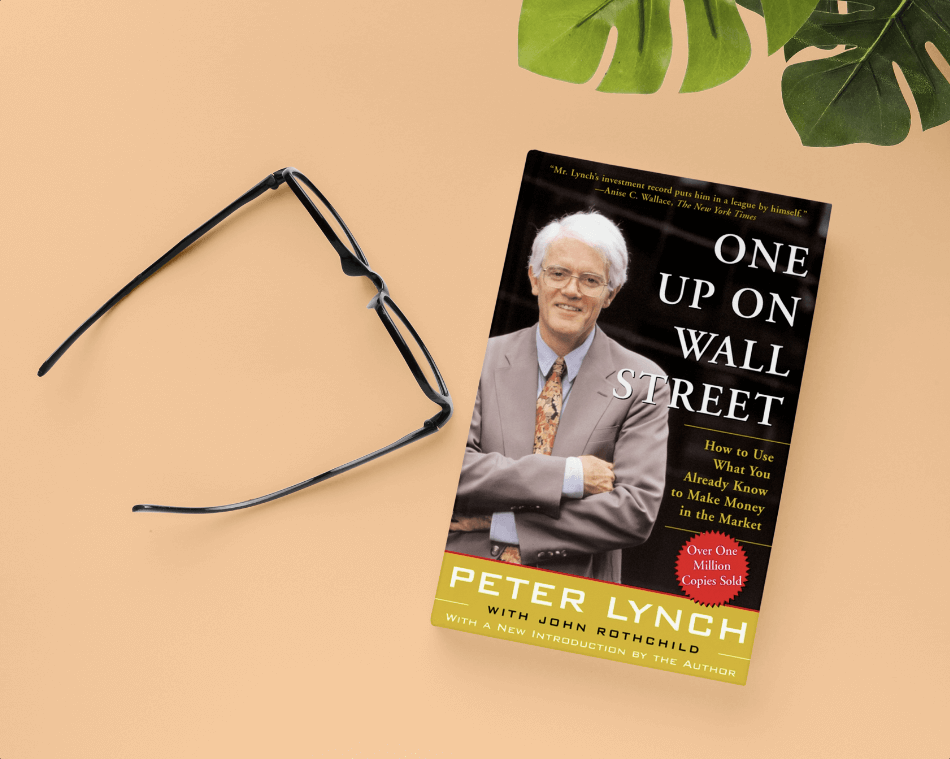Book Review – One Up On Wall Street by Peter Lynch

“One Up On Wall Street” is a timeless classic in the world of investing, penned by Peter Lynch, the legendary former manager of the Fidelity Magellan Fund. Lynch’s insights and straightforward approach to investing have made the book a must-read for both novice and seasoned investors. Drawing on his extensive experience managing one of the most successful mutual funds of all time, Lynch provides practical advice that empowers investors to make informed and profitable decisions.
Here are the key takeaways and lessons from this invaluable book:
1. Do Your Homework: Research Is Crucial
Lynch stresses the importance of thoroughly researching the companies in which you invest. Rather than relying solely on market trends or analysts, Lynch advises individual investors to take a hands-on approach. This includes visiting the company’s headquarters, meeting with management, and understanding the company’s products or services firsthand. This direct knowledge gives investors a unique edge in identifying investment opportunities before they become mainstream.
2. Focus on Earnings Growth
According to Lynch, a company’s earnings growth rate is one of the most important indicators of its long-term potential. He argues that companies with consistent, strong earnings growth are more likely to succeed over time. By focusing on businesses that are expanding their profitability, investors can identify companies that are positioned for sustained success.
3. Pay Attention to the Price-to-Earnings (P/E) Ratio
Lynch advises investors to pay close attention to a company’s price-to-earnings (P/E) ratio. A low P/E ratio can indicate that a company is undervalued and may present an attractive investment opportunity. Conversely, a high P/E ratio may suggest that a stock is overvalued, though this can also be justified in cases where the company is experiencing significant growth. By comparing the P/E ratios of similar companies in the same industry, investors can spot opportunities where a stock may be mispriced.
4. Diversification Is Key
While Lynch acknowledges the importance of diversification, he stresses that it shouldn’t be done indiscriminately. Rather than diversifying simply for the sake of risk management, Lynch advises investors to select investments that they truly understand. His approach to diversification is focused on spreading investments across different sectors and industries, allowing for risk reduction without overextending oneself in areas outside of their knowledge.
5. Look for Companies with a “Moat”
Lynch introduces the concept of a “moat” — a competitive advantage that protects a company from its competitors. Companies with a strong moat, such as a powerful brand, technological edge, or regulatory advantages, are more likely to maintain their position in the market over the long term. Investing in such companies provides a layer of protection from market volatility and competition.
6. Strong Management Matters
A key component of Lynch’s investment strategy is evaluating a company’s management team. He stresses that strong leadership is essential for guiding a company through periods of growth and challenges. A capable, honest, and visionary management team is more likely to make decisions that benefit the company’s shareholders. Lynch advises looking for companies where the management has a track record of good decision-making and an aligned interest in the company’s success.
7. Patience Pays Off
Lynch cautions against being swayed by short-term market fluctuations. One of the most critical lessons in the book is the importance of patience. While markets can be volatile in the short term, Lynch encourages investors to maintain a long-term focus and resist the temptation to make quick, reactionary decisions. By sticking to their strategy and allowing their investments to grow, investors can capitalize on the long-term potential of their holdings.
8. Insider Buying Is a Positive Signal
One of Lynch’s lesser-known but valuable insights is the importance of insider buying. When executives or directors buy shares in their own company, it signals confidence in the company’s future prospects. Lynch sees this as a strong endorsement of a company’s potential. While insider selling doesn’t necessarily indicate trouble, insider buying should be viewed as a positive signal that the leadership believes in the company’s growth.
9. Individual Investors Have an Edge
Lynch believes that individual investors have an advantage over professional investors. Unlike institutional investors, individual investors are not bound by the same constraints, such as large-scale capital or a focus on widely followed stocks. This flexibility allows individuals to invest in smaller, under-the-radar companies that have been overlooked by the market. These “hidden gems” often present attractive investment opportunities before they are recognized by professionals.
10. Consistency and Discipline Lead to Success
In his concluding thoughts, Lynch emphasizes the importance of consistency and discipline in investing. He argues that investors who develop a clear, well-thought-out investment strategy and stick to it, even in the face of market volatility, are more likely to achieve long-term success. Successful investing is not about timing the market or finding shortcuts, but about being disciplined, staying informed, and consistently following your strategy.
Conclusion
“One Up On Wall Street” is an essential read for anyone looking to understand the fundamentals of investing from the perspective of one of the most successful investors of all time. Lynch’s practical advice, drawn from his own experience, helps investors of all skill levels develop a strategy based on research, patience, and discipline. The lessons in this book are timeless, providing a roadmap for building a strong portfolio, spotting opportunities, and managing risks.
Whether you’re a novice looking to start your investment journey or an experienced investor seeking to refine your approach, Peter Lynch’s insights provide invaluable guidance for achieving success in the stock market. This book is a must-read for anyone serious about investing and creating long-term wealth.
